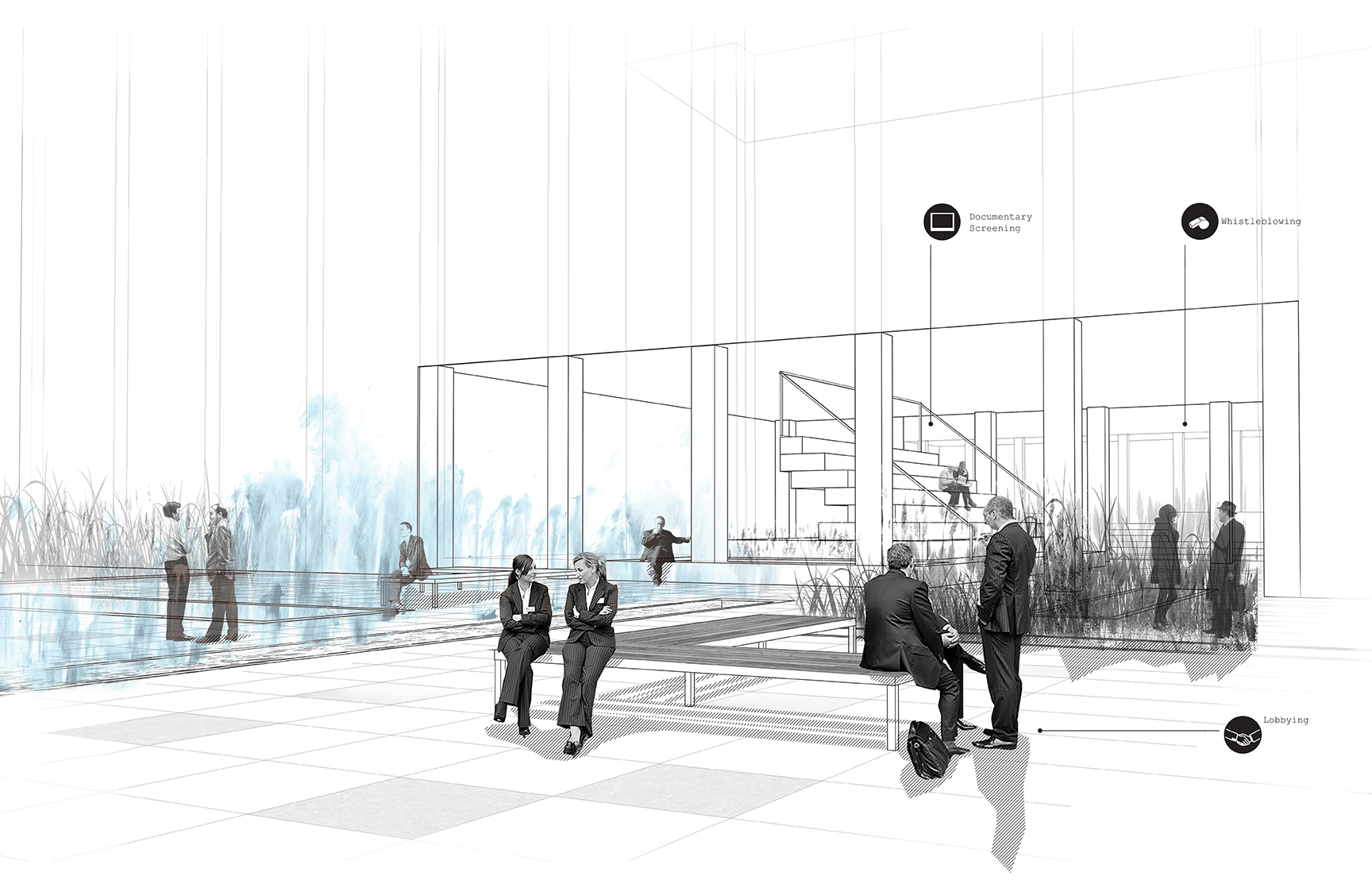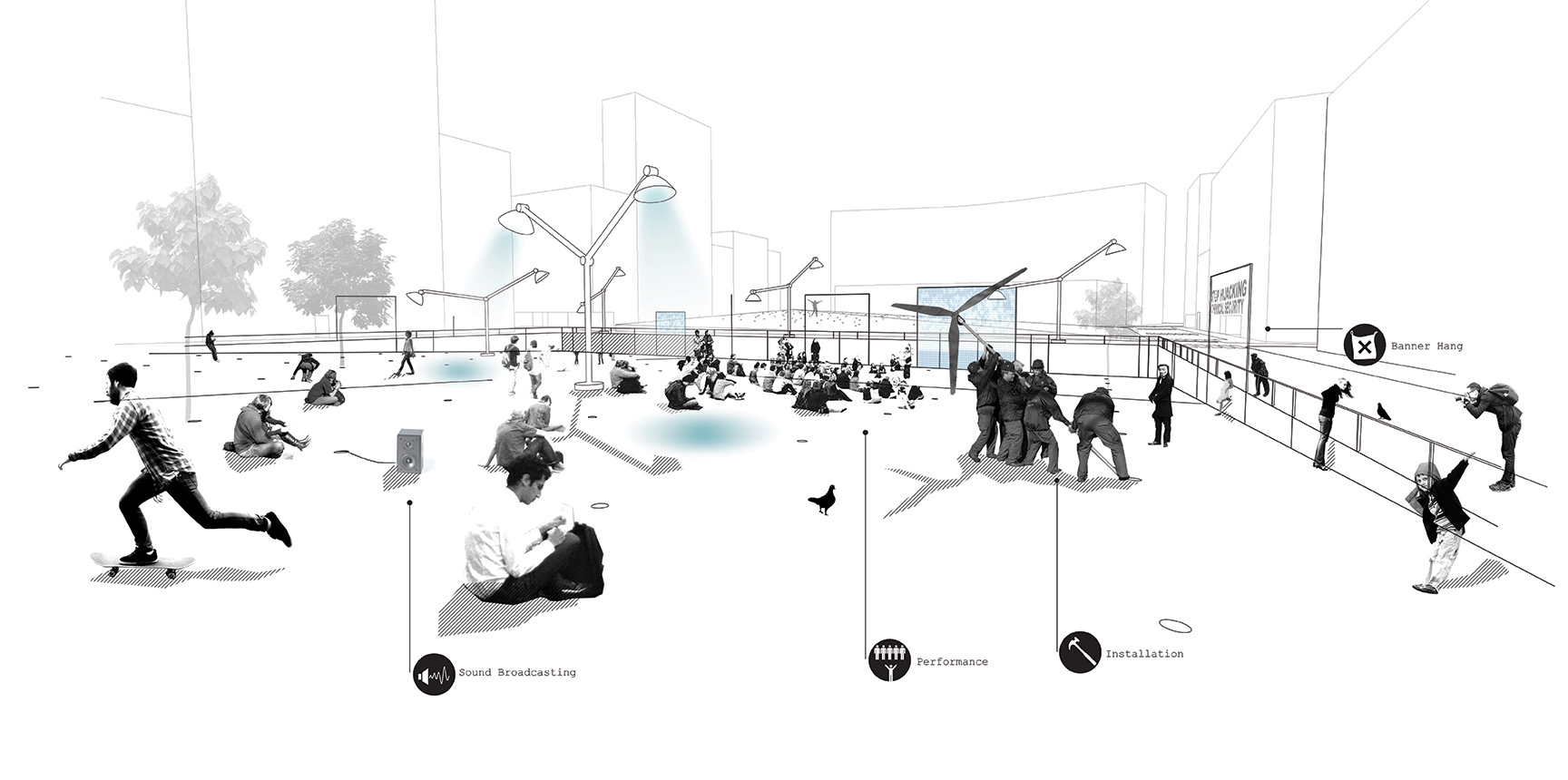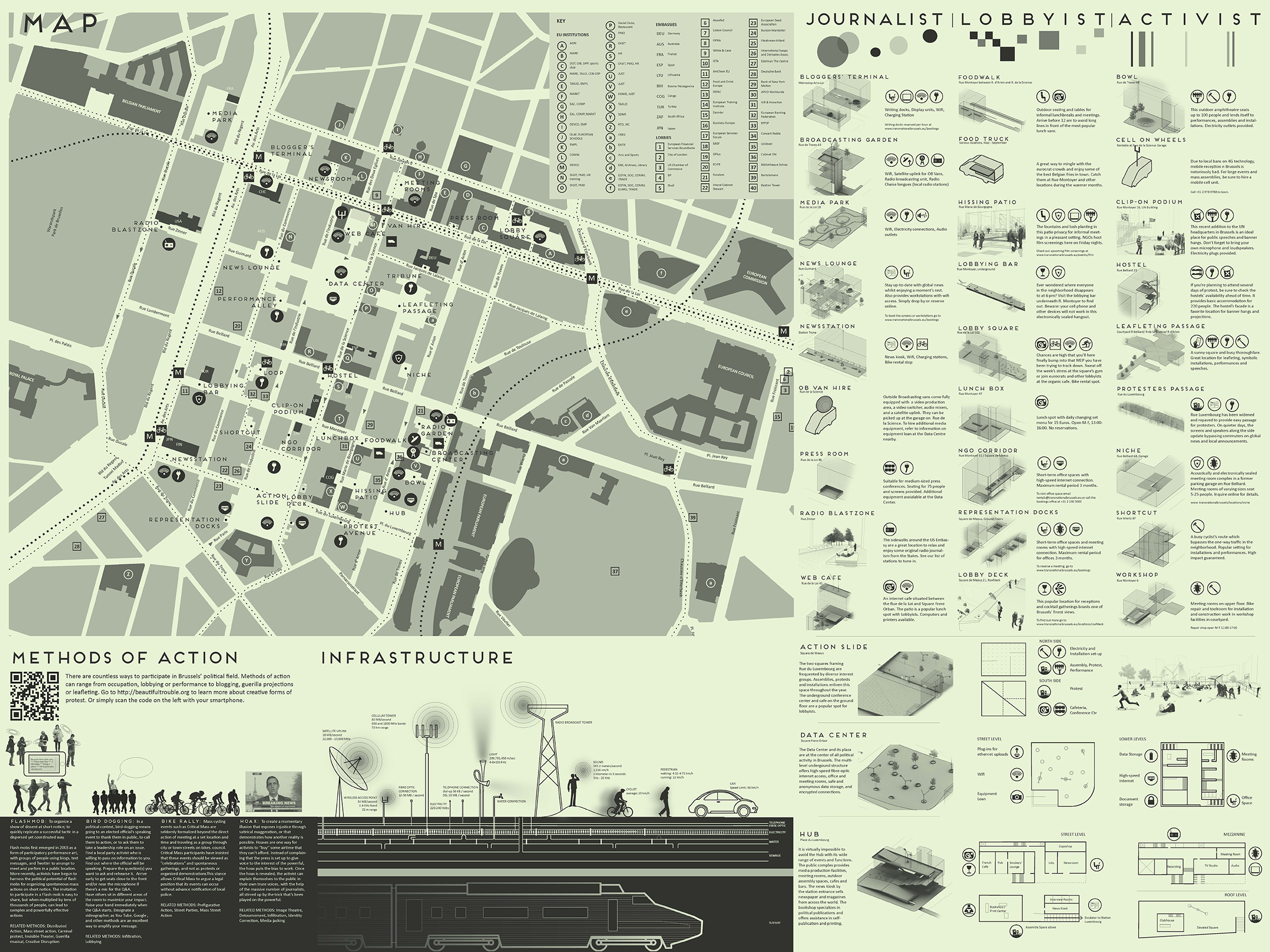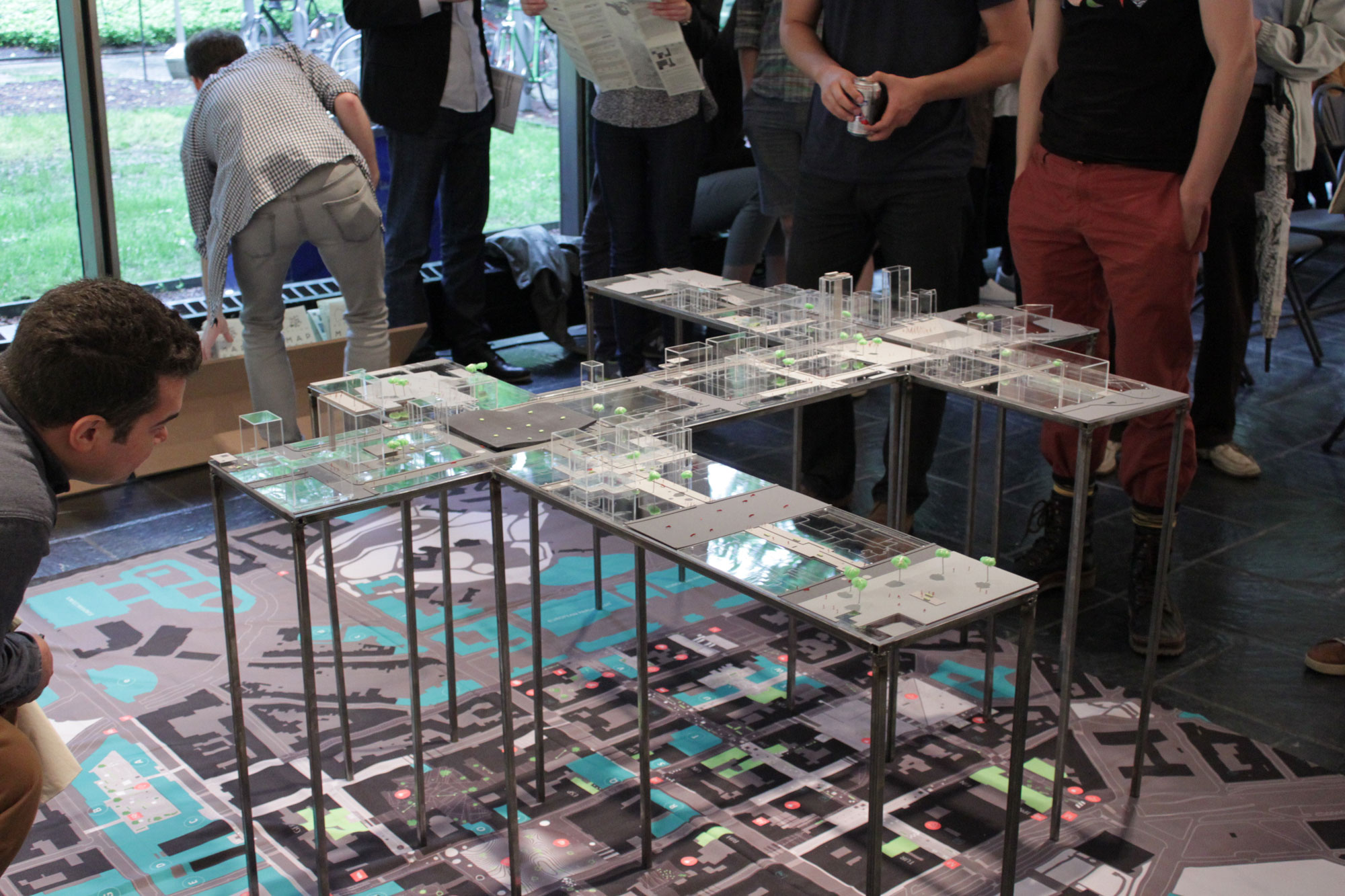TRANSNATIONAL BRUSSELS
A GROUND FOR ACTION
Spring 2013, Princeton School of Architecture
Supervisors: Hayley Eber, Liz Diller
Recipient of the Susanne K. Underwood Thesis Prize
This thesis project considers architecture’s political agency in a transnational world. Focusing on the city of Brussels as a paradigmatic transnational space, the project proposes a strategic rethinking and recoding of urban space to accommodate contemporary forms of political action. The new master plan for Brussels’ Leopold Quarter includes the insertion of new public space into the densely built-up neighborhood, alongside a wide spectrum of program that animates the newly claimed urban space. Interventions are situated in the overlaps and niches between different orbits of power where they operate as instruments of spatial contamination and political subversion.
The Transnational Spectrum of Brussels
Like only few other cities in this world, Brussels has attracted political institutions and interest groups representing all political levels. Brussels is the capital of a divided nation. Belgium’s division into a French – and Dutch-speaking community, led the Belgians to establish Brussels as a kind of neutral ground, a bilingual enclave in the midst of Dutch-speaking territory. The city’s perceived neutrality is also what attracted two major global players, the EU and Nato, to the city. Lastly, and not surprisingly, this has led to the emergence of a strong anational sector, consisting of the world’s largest press corps, a lobbyist population of 15 – 30,000, and large groups of activists who descend upon the city every year in the hundreds of thousands to address the resident political bodies.
The Political Landscape of Brussels (European institutions in blue, corporate lobbies in black, regional representations in red, embassies and national bodies in green; hatched areas indicate territory that is under municipal restrictions, meaning protests are not permitted at all or only under very specific circumstances.)
The project focuses on the Leopold Quarter, which is situated to the east of the historic center. Whilst institutional politics and its sidekicks (such as lobbying) thrive in this part of Brussels, the public remains a suppressed entity.
Gradient Map: indicating degree of accessibility of public space
The peculiar condition of the neighborhood’s public space isunderstood more readily when looked at as a field condition. The various overlapping orbits of power currently produce a defensive and restricted ground.
Action Map Brussels: a two-sided document in the format of a folded city map, combining research and design proposal. It imagines a potential user arriving in Brussels, learning about the city and its political ecosystem, and using this active ground for their own purposes.
The proposal focuses on three potential user groups that together construct a broad spectrum of political participation:
The activist who constructs a voice through physical presence and intervention
The lobbyists who constructs a voice by targeting sources of power directly
The journalists or blogger who constructs a voice through the sharing of information
Clip-on Podium, United Nations Representation
The project is characterized by a close attention to edge and border conditions, be they of jurisdictional nature – such as here at the UN building – or of tectonic nature. Other parts of the masterplan foresee the occupation and mobilization of edges as small as a curb or as invisible as the blastzone around embassies (below).
Radio Blastzone, American Embassy
Protective bollards are replaced with concrete chaises longues broadcasting American radio stations to the local population. In this manner the jurisdictional edge is thickened to perform as a political enabler.
Mapping Assange
The concern for the political potential of edge conditions stems from research conducted on Julian Assange, who since June 2012 has been utilizing a space of exemption – the Ecuadorian embassy in London- as a means to broadcast a political message and to negotiate his unique status as an activist, alleged criminal, state enemy and icon. The drawing maps his first months in the embassy and the two spaces on either side of the jurisdictional border. I was particularly interested in his appearances on the balcony of the embassy as a moment of leakage (in the architectural and political sense): a moment of spatial contamination and political subversion.
Many of the proposed interventions seek to learn from the spatial dynamics of Assange’s speeches and situate potential for action in the overlap between different orbits of power. Each of these moments addresses a particular site condition, and exploits or shuns the proximity to various institutions.
1:500 Model consisting of sectional pieces on metal frame and city carpet
Despite their site-specificity, a series of systems binds these moments into a unified active ground with a degree of recognizability. This includes
materiality and graphics
street furniture and lighting
infrastructure, mobile elements and media outlets


















